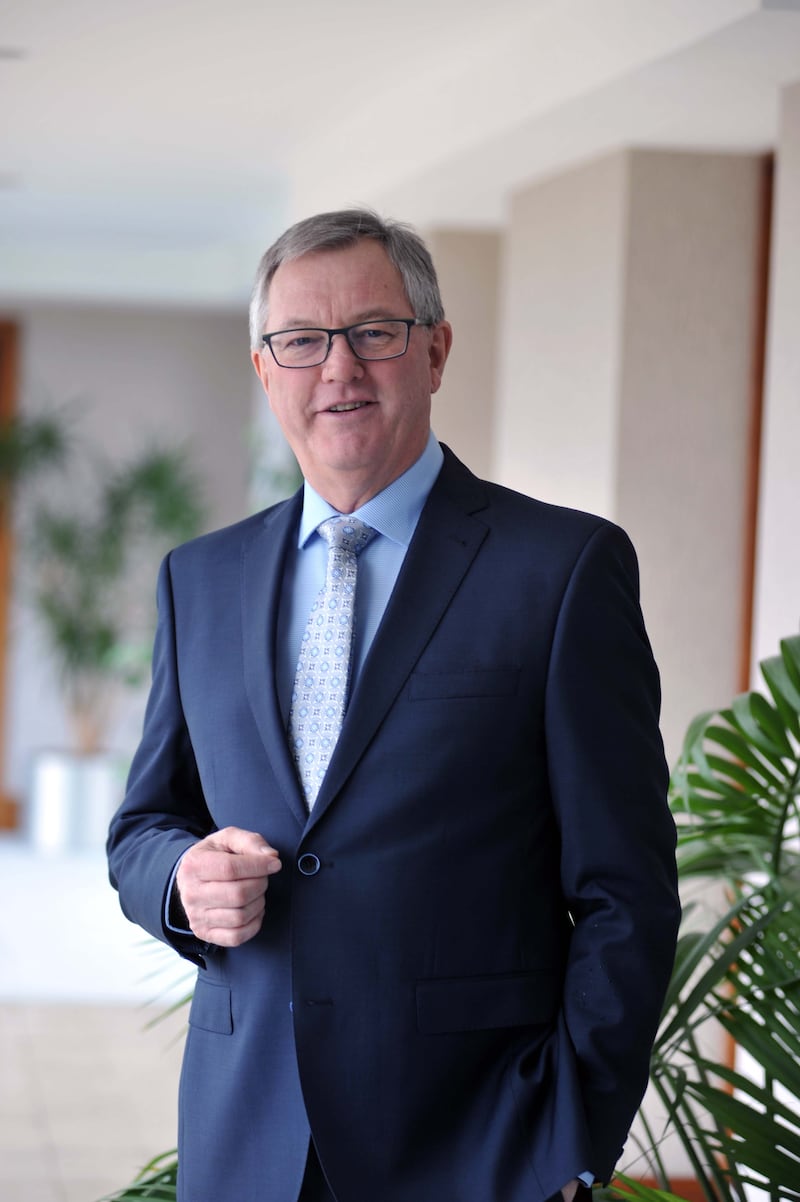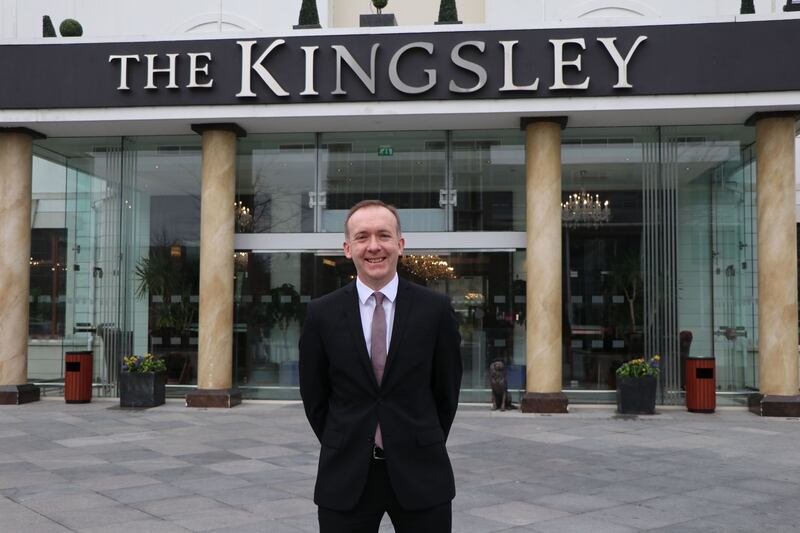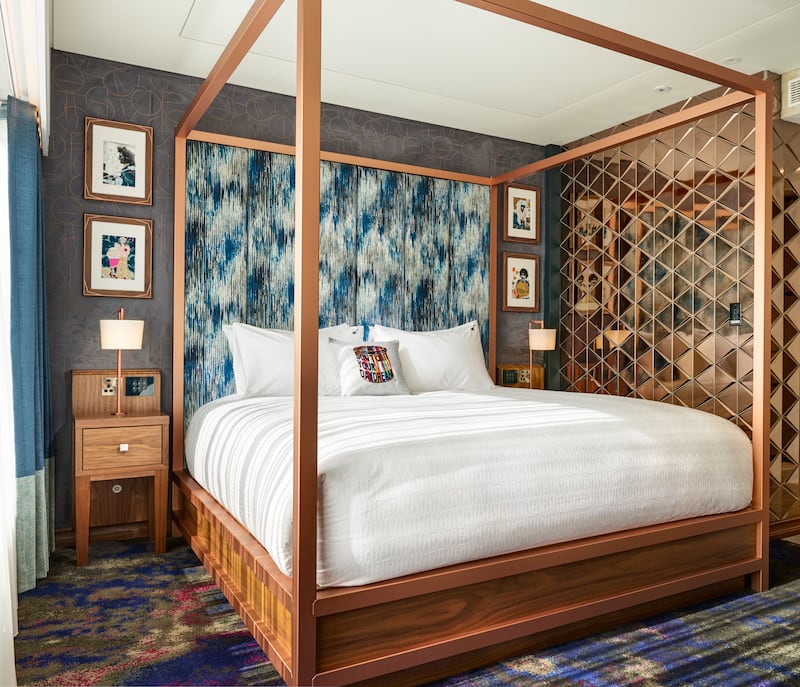Dublin is brimming with hotels, with several hip brands such as the Hoxton announcing openings in the next couple of years. Indian-UK entrepreneur Sharan Pasricha’s Ennismore group will launch its first Irish hotel in 2024 in the old Central Hotel in Dublin 2, which has lain idle throughout Covid.
Meanwhile, work has started near St Patrick’s Cathedral on a 247-bed CitizenM property, led by Indian businessman Rattan Chadha. German chain Motel One plans to open a 310-bed hotel on Abbey Street by the end of this year, with many other budget offerings in the pipeline.
Experts say some 2,500 new hotel rooms will open in the city this year, with another 1,000 annually in the following two years. By all accounts the Irish hotel industry is booming.
In the past 20 years Ireland has experienced significant growth in tourism numbers, both in terms of leisure and business travel. It supported more than 270,000 livelihoods at its peak in 2019 (pre-Covid) and generates about €9.3 billion in revenue and €2 billion in tax receipts annually.
The industry experienced a severe economic shock during Covid, but post-pandemic has seen a significant bounce back with Central Statistics Office figures for April 2022 showing an 86 per cent recovery when compared with April 2019.
“At Dublin Airport, we continue to see a definite recovery in the amount of business travel taking place,” says Vincent Harrison, the airport’s managing director. “An increase in business travel was one of the key drivers of passenger growth during the month of October, which saw 2.7 million passengers passing through, taking us back to 94 per cent of pre-pandemic passenger levels. Two key markets for business travel would be the UK and North America, which were up by 74 per cent and 270 per cent respectively in October 2022 versus 2022.”
But with electricity costs up 400 per cent, gas up 300 per cent and food costs up 22 per cent since before the pandemic, as well as staff shortages and the war in Ukraine, the Irish Hotel Federation says the industry is entering into worrying times.

“As Ireland’s largest indigenous employer, the long-term sustainable growth of the tourism industry is of vital importance,” says Tim Fenn, the organisation’s chief executive.
“Hotels are the linchpin of Irish tourism, supporting the economy, jobs, communities and local cultural activities the length and breadth of the country. This goes hand in hand with Ireland’s experiential tourism offering and significant supports and investment in wider cultural experience enjoyed both by people living in Ireland and visitors to our shores,” he says.
“Having just come through the worst economic shock in living memory the sector has seen a welcome upturn in business levels this year, thanks in large part to very high levels of pent-up demand and displaced activity.”
The pent-up demand created by the lockdowns and other restrictions during that period has driven growth this year, with the result that many hotels countrywide, such as the Kingsley in Cork city, enjoyed a good summer and largely stronger trade than might have been expected.
During that period hotels were criticised for price hikes, particularly in Dublin, where rates were more than €300 in some cases for modest rooms.
“Like many other sectors of the economy, accommodation has experienced price increases,” Fenn counters. “Over a three-year period comparing July 2022 with July 2019, Dublin saw a total increase of 23 per cent in average hotel prices. This is on foot of an exceptional level of pent-up demand and deferred business post-Covid and must be placed in the context of widespread business cost increases during this period, including electricity up 400 per cent and gas prices up 300 per cent since 2019, as well as significant increases across all other business costs.”
Supply issues also played a role, he adds. “Like cities the world over, there will be times when Dublin and other major tourism centres experience significant capacity constraints, in particular for major sporting and cultural events. This was particularly the case in summer 2022, when there were exceptional levels of demand relative to supply, meaning that the city was effectively sold out on a number of peak nights. Even with these well-documented capacity pressures, however, the average daily room rate in Dublin at the peak of the tourist season in July was €187.63, significantly below the daily average in other European capital cities such as London [€262.09], Rome [€215.74] and Edinburgh [€214.87].”

But when hotels enter the winter months they expect demand to dissipate and Irish customers will have less disposable income for expensive overnight stays.
“Some of the market segments that hotels like the Kingsley would previously have heavily relied on, such as international corporate travellers, for example, have still not returned to anything like their pre-Covid levels,” says Fergal Harte, general manager of the Kingsley.
“Hotels cater to different clients and markets depending on their location and facilities. Speaking for the Kingsley, we are optimistic for the future, although we have concerns around rising costs in all areas of the business. High inflation, rising interest costs and the war in Ukraine make for a very challenging global trading environment, which will no doubt have a serious impact on the Irish hotel sector. We therefore expect next year to be a challenging one, as consumers’ discretionary spend is reduced locally and internationally,” Harte says.
Fenn agrees that with severe economic challenges facing our largest overseas markets, including the United States, UK and the rest of Europe, the industry is entering worrying times. “With approximately 70 per cent of our overall tourism revenue coming from overseas, any global downturn will have a very significant impact on our tourism outlook,” he says.
Harte says hotels are a vital component in underpinning the tourism product wherever they are situated. “They bring tourists in, which in turn provides visitors for local arts and cultural activities and attractions. The restaurants, cafes, bars and shops located around hotels also benefit for the same reason. Hotels are also a critically important hub for their local communities where they generate employment and drive business and revenue for local and regional suppliers,” he adds.
He remains positive and optimistic for the future. “The Kingsley and the other hotels in Cork provide excellent facilities and service to our guests, which will help us through the likely difficult times ahead. One of the features of this business is that the sector must keep reinventing itself to stay relevant and attractive to potential customers. We managed that during Covid and I believe we’ll do it again,” he says.
We checked out five Dublin hotels that opened their doors recently:
The Arthaus is located on Mercer Street near St Stephen’s Green and is a small hotel with just 41 bedrooms featuring unique Bauhaus-inspired design. The hotel has been designed and led by women, from the original concept and design throughout by architect Yvonne Clarke of Clarke & Whiteman, specialists in architecture, interior design and artwork for the hospitality industry, to the general manager, Orlaith McCann.
The hotel bar and restaurant serves Italian-inspired cuisine and is hearty, decent fare. Rooms are small but very comfortable and include air conditioning, wifi and tea- and coffee-making facilities. Parking is available in the Royal College of Surgeons and everything you might need is on your doorstep.

Hard Rock Dublin opened during Covid and is very centrally located on Dublin’s Dame Street. It comprises two buildings: a listed property, built at the turn of the 20th century and originally known as Exchange Buildings, and the adjacent Fashion House building. These are attached by a glass walkway and the 120 bedrooms are large and comfy with great views of the streets below. Staff are friendly and helpful. Zampas restaurant serves a unique blend of Peruvian and Irish cuisine and the open kitchen allows you to watch the chefs prepare each plate with skill. Dishes such as ceviche and Peruvian spiced pulled pork tacos, as well as mains including Asador Peruvian roast chicken, are very well thought out and tasty.
With Temple Bar, Henry Street shopping and O’Connell Street a mere 500m walk from its front door, the Hampton City Hotel in Smithfield is also close to attractions such as the Jameson Distillery, Guinness Storehouse, Trinity College, city museums and the Phoenix Park.
Catch up with work at the desk with free wifi, tea- and coffee-making facilities, an iron/ironing board, and a laptop-size safe to hand. Refresh in the bathroom with a full shower, fluffy towels and bath amenities.
The Samuel Hotel is a four-star hotel located at Spencer Place that offers a range of deluxe and executive rooms.
The Samuel bar and grill opens for breakfast, also serving brunch and afternoon tea and it has a modern all-day menu featuring seasonal specials. The Red Bean Roastery coffee shop on the ground floor has ample seating and exciting choices for quick and convenient breakfasts or lunches on the go.
The hotel is ideally positioned near the Convention Centre Dublin, the IFSC business district, Spencer Dock and the 3Arena.
The Maldron Hotel Merrion Road is a brand-new, modern hotel in the heart of Dublin 4. Close to Ballsbridge, Donnybrook and Blackrock, it offers easy access to the RDS and the Aviva Stadium. The area is very well served by public transport, with bus and Dart stations nearby and is easily accessible off the M50.
The hotel offers a range of bedrooms including deluxe double, deluxe double single, executive king and accessible rooms. Try some of the dishes in Grain and Grill restaurant and bar with gourmet bites and cocktails, making it an ideal venue to meet that business client.















